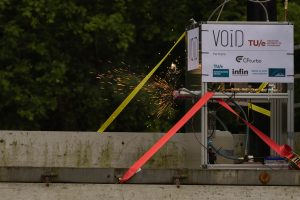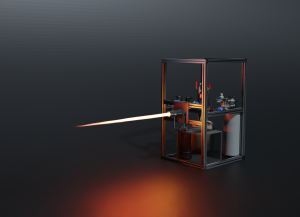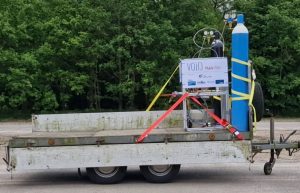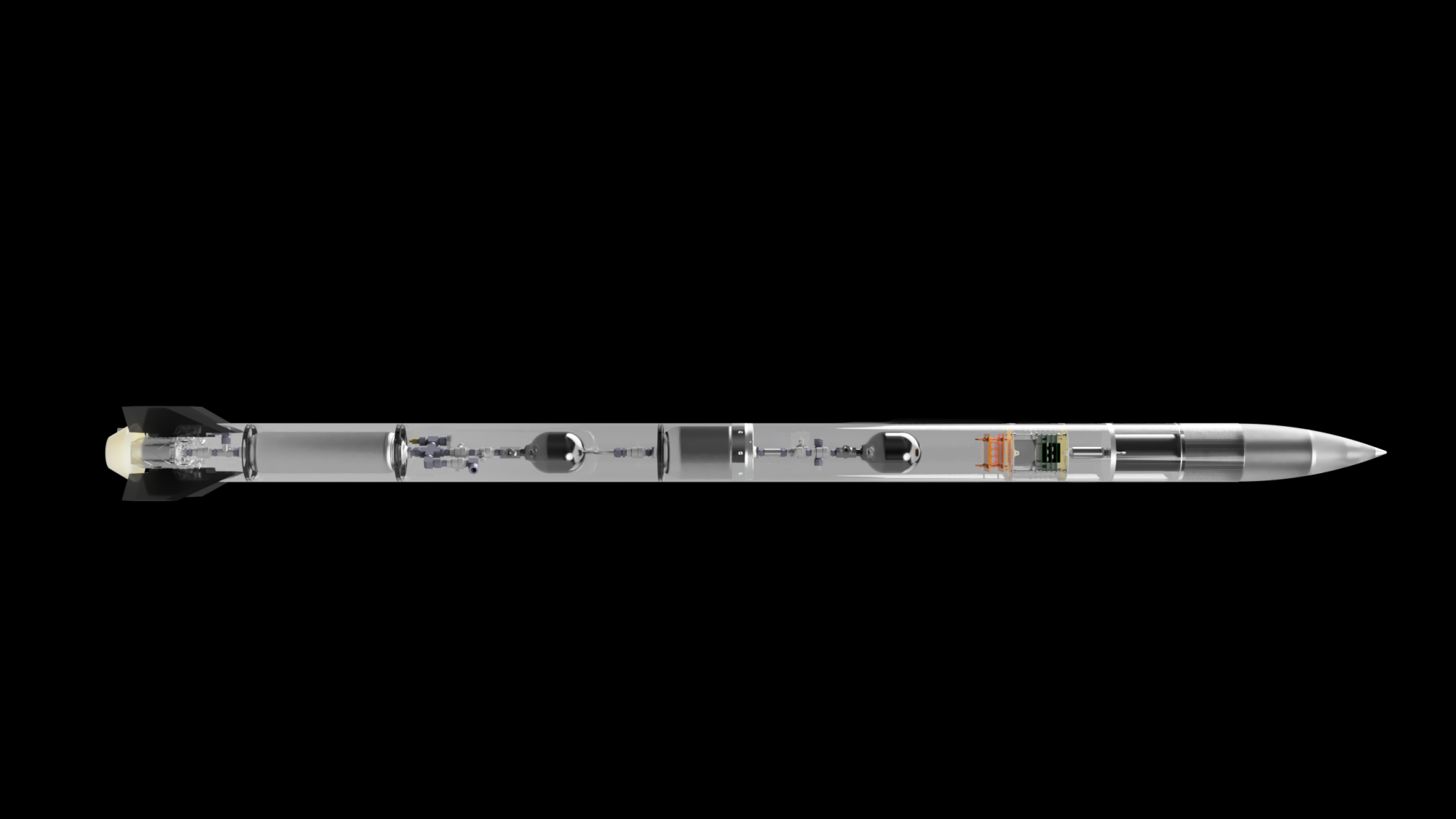JACKALOPE
September 2024 – ongoingThe Jackalope is our ongoing project for a vertical takeoff, vertical landing (VTVL) hopper, aimed at supporting our long-term goal of launching and soft-landing rockets. Currently under development, it features a thrust vector control (TVC) system that will enable precise in-flight adjustments by directing engine thrust.
By reusing infrastructure from our EuRoC rocket, we are significantly reducing research and development time while ensuring component reliability. We plan to incorporate enhancements like precise throttle control, landing legs, a new flight computer, and accurate landing guidance. The Jackalope is a vital step toward achieving our vision of successful rocket landings.
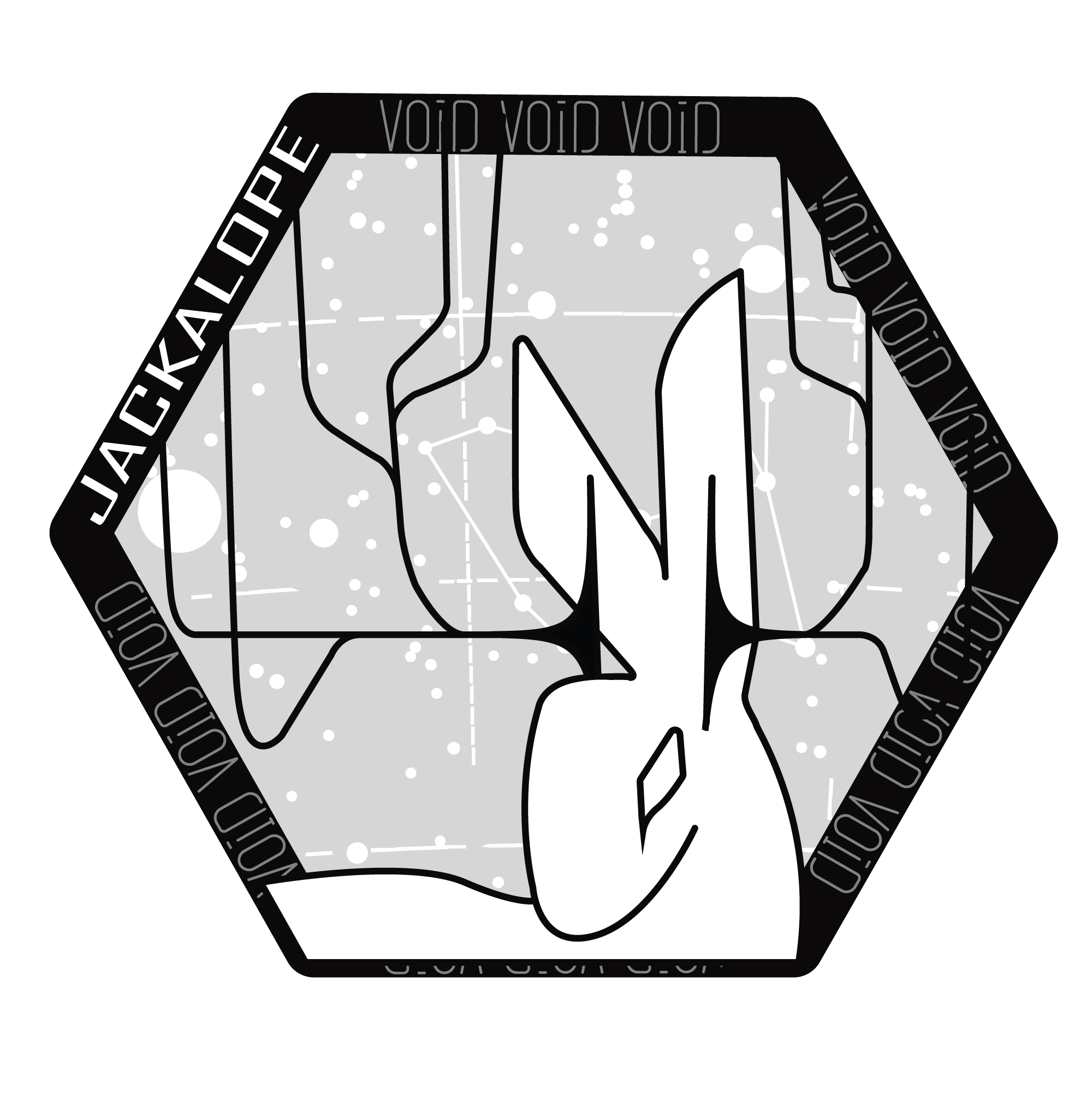
IGNIS
April 2024 – ongoingThis project involves Team VOID’s participation in EuRoC, a European inter-university rocket competition organized by the Portuguese Space Agency. In this event, around 20 student teams from top universities come together to showcase their skills in rocket design, development, launching, and recovery. Team VOID is focused on developing the rocket Ignis, which aims to compete in the 3,000-meter altitude category.
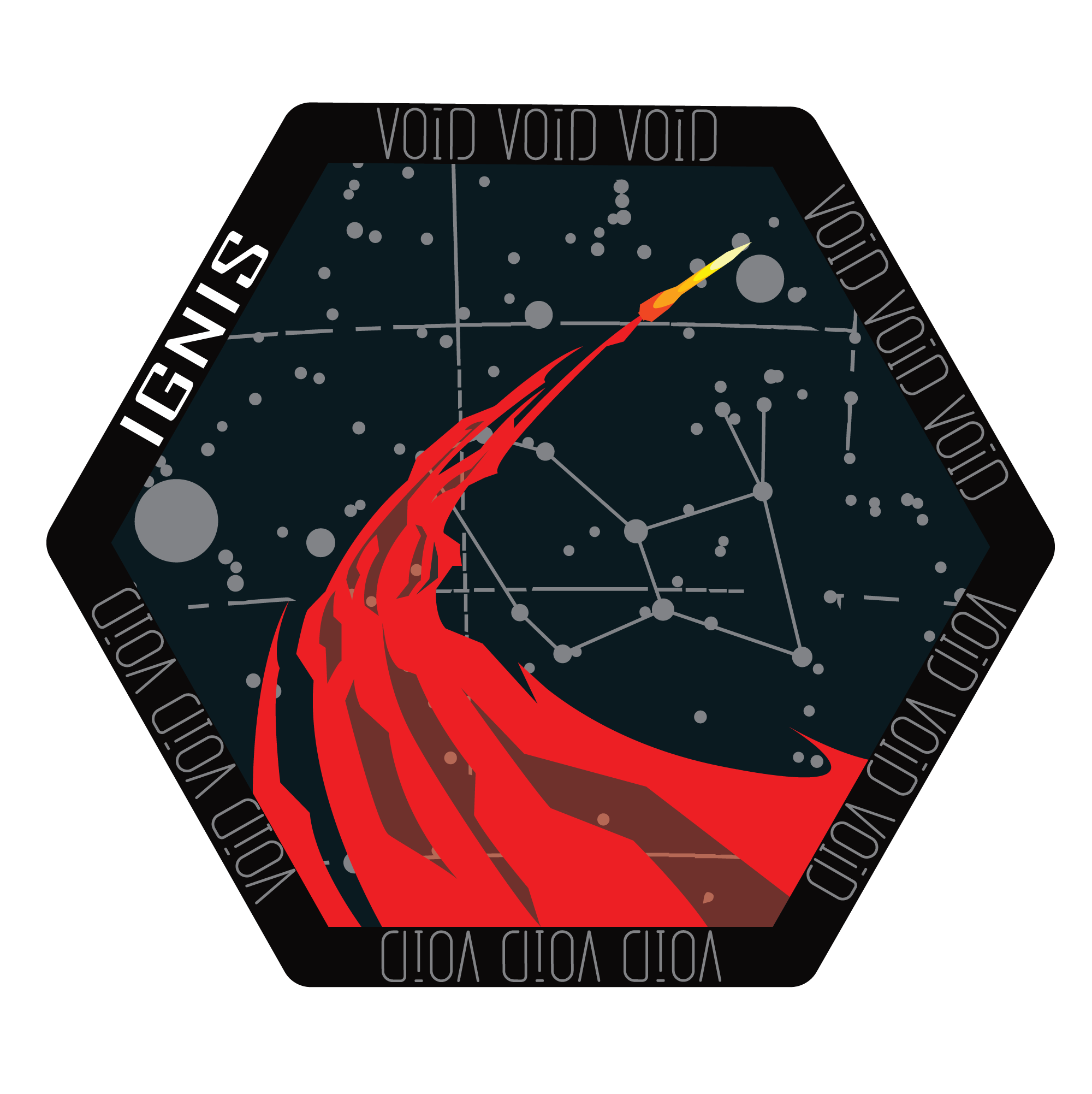
NOVA-2
April 2024 – ongoing
NOVA-2 is VOID’s latest rocket engine, powered by LOX and ethanol, designed to reach an impressive 3,000-meter apogee. Leveraging insights from NOVA-1, this engine offers enhanced power and precision, marking a significant advancement as we prepare for EuRoC. We can’t wait to see how far it will take us!
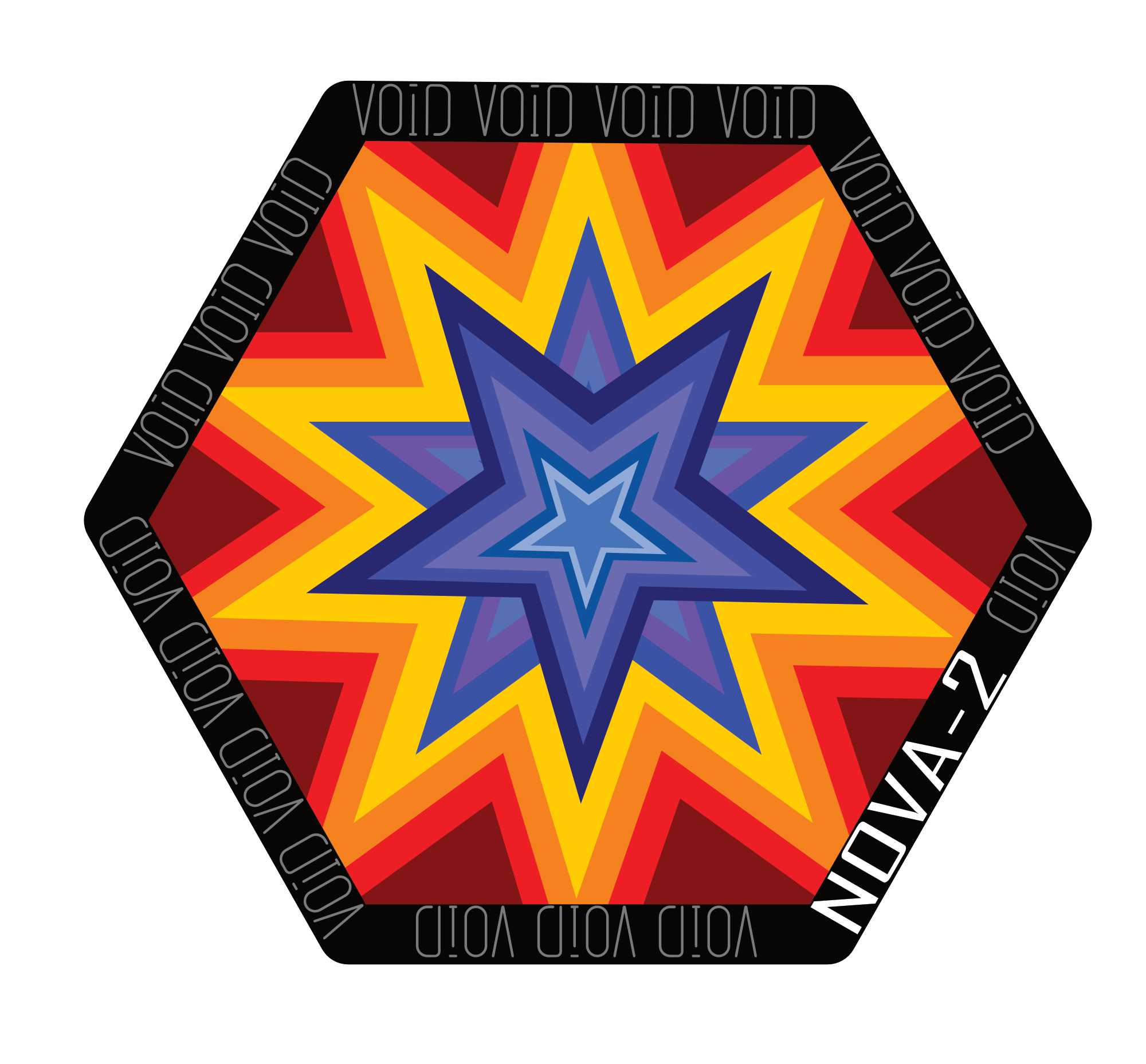
Technical specifications
- Propellants: Ethanol and Liquid Oxygen
- Thrust: 1200 Newtons
- Chamber pressure: 20 bar
- System: pressure-fed and regeneratively cooled
- Apogee: 3000m



NOVA-1
September 2023 – May 2024
The NOVA-1 project marks an important step in our journey to develop advanced liquid bi-propellant rocket engines. Designed as a prototype and learning platform, NOVA-1 has provided our team with hands-on experience in engine development, including real-world testing and troubleshooting. Below, you’ll find a summary of our key test fires and the valuable insights we’ve gained along the way.
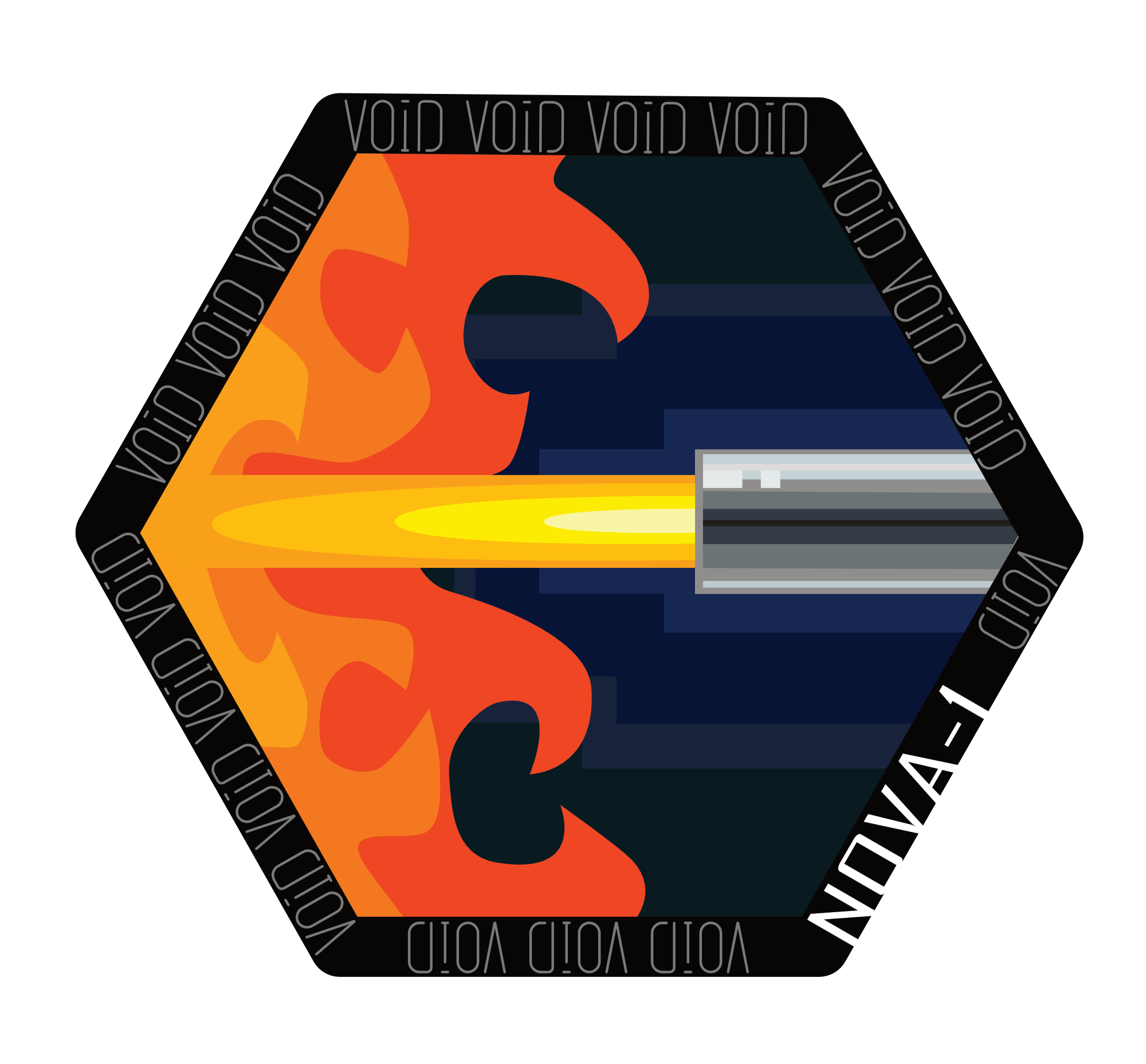
Test fire 1
During the first test-fire, the igniter was unexpectedly ejected prematurely, causing ignition outside the chamber. However, safety systems worked flawlessly, including the flushing process, which protected the engine from damage. Despite the ignition issue, the team considers this test a success, as it confirmed the effective operation of all other systems. With potential solutions identified, plans for a follow-up test were set in motion.
Test fire 2
Following the first test, the team implemented various improvements, including updates to both hardware and software, operational adjustments, and a restructured startup sequence. This second test saw the engine ignite multiple times, though combustion was sustained only briefly, lasting around a second. Analysis suggests the combustion challenge was due to a timing issue within the startup sequence, affecting the propellant mixture.
While this marks the end of NOVA-1, the engine served as a valuable learning platform. The team gained crucial experience in developing liquid bi-propellant rocket engines. We’ve learned a lot and will continue pushing the boundaries to create even more powerful engines and rockets in the future.
Technical specifications
- Propellants: Ethanol and gaseous Oxygen
- Thrust: 20 Newtons
- Chamber pressure: 10 bar
